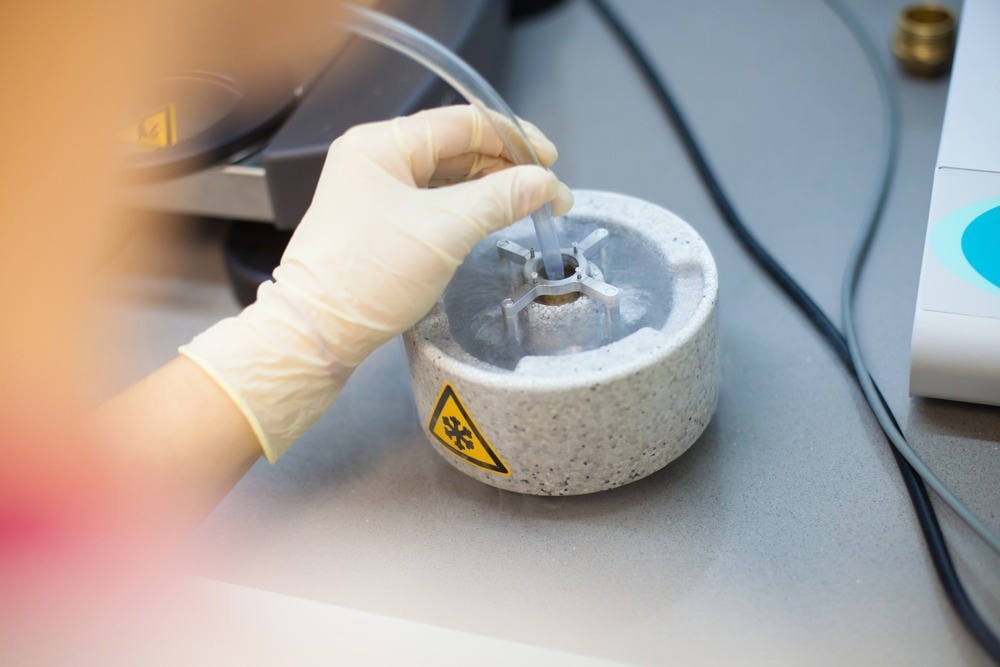Zeolites are materials made from aluminosilicate structures that sometimes incorporate other elements. Many applications of zeolites, such as catalysis or as energy storage materials, rely on the distinctive porous structure of the material that allows ions or molecules to pass through or be trapped.1

Image Credit: Yushchuk Myroslava/Shutterstock.com
Most zeolites have a crystalline structure with AlO4 or SiO4 groups in linked tetrahedral structures. The crystalline nature of the zeolite structure means the primary pore networks in the zeolites are well-defined in terms of their dimensions. The regular size of the pore dimensions makes zeolites an excellent choice for processes and applications that require shape selectivity of molecular targets.2
Controlling the transport properties through a zeolite and the rates of diffusion and size of molecules that can be stored or transported are key in developing and optimizing zeolites for various applications. Controlling pore sizes and structures is a key aspect of zeolite design and synthesis, whether making nanometer-scale pores,3 or changing the geometries of the pore networks.
Although zeolites formally have a regular, crystalline structure, many synthesis procedures can potentially introduce defect sites into the zeolite structure.4 A defect is an imperfection in the regular arrangement of the atomic sites in a crystal structure.
Defect sites can change the local reactivity and types of intermolecular interaction around the defect site, which may sometimes have beneficial effects for a given application. In zeolites, it has been demonstrated that introducing defects into the zeolite structure can enhance the efficiency of polyethylene cracking processes.5
Imaging Defects
Imaging pore structures in zeolites can be very challenging as the structures are internal to the zeolite. Imaging and identifying defect sites can also pose a number of challenges as the defects often occur at just a single atomic site, and so any imaging approach will need atomic-scale resolution.
The outstanding spatial resolution of the family of electron microscopy has proved invaluable for studying atomic site information in zeolites due to their ability to resolve single atoms and provide elemental information on the atomic species present.6
One of the challenges it has been necessary to overcome with the application of electron microscopy to zeolite structural imaging is the problem of beam damage, to which zeolites are particularly sensitive. Electron microscopy experiments use very intense electron beams to image samples; the brighter the beam, the quicker the image acquisition time and better the contrast in the final image. Part of the need for these highly intense beams is often due to the poor quantum efficiency of electron imaging detectors.

Image Credit: PolakPhoto/Shutterstock.com
For many samples, in particular biological species, the intense nature of the electron beam leads to damage of the sample via a number of different mechanisms. While the use of cryogenic conditions can help alleviate some of this, and is why cryo-EM has proved such a popular method in structural biology studies, using cryogenics is not necessarily feasible for all sample types, nor does it prevent all types of radiation damage.7
What researchers were able to do was design lower-dose electron microscopy methods that could still provide sufficiently high-quality images for structural identification to examine the atomic level structure of the zeolites.6
Atomic Scale
Another extension of the application of electron-based structural information techniques has been the use of electron ptychography to study local atomic structures in zeolites.8 Ptychography is a type of computational imaging technique where a number of interference patterns are recovered at a number of different sample positions.
Together, a phase retrieval algorithm can be used to combine all of the information in the different datasets to retrieve information on the scattered wave that has been detected. By being able to recover information on the phase and the modulus of the wave, a full, potentially multi-dimensional image of the object can be retrieved.
Ptychography approaches can be combined with a number of different wavelengths and imaging methods, including four-dimensional scanning transmission electron microscopy (4D-STEM). The team used 4D-STEM to recover a number of different 2D diffraction patterns at a variety of positions using highly sensitive detectors that gave improved image contrast for even a weak electron beam.
By then using ptychographic approaches for image reconstruction, the team was able to study the structures of two of the most widely commercially available zeolites.
Using several different phase reconstruction algorithms and a comparison to benchmark data on a less-sensitive zeolite, which was measured with conventional direct electron imaging approaches, the team showed that 4D STEM with ptychographic reconstruction was a valuable method to evaluate the structure of local framework and the extra framework atoms in even highly sensitive zeolite structure. The team was also able to locate Na+ ions that were present in the zeolite.
Zeolites are well-established materials in many different industries, particularly for chemical filtering. Improvements in atomic-level imaging methods are helping identify how atomic-level defects can be used to further enhance and tailor zeolite properties for a new generation of zeolite materials.
References and Further Reading
Weitkamp, J. (2000). Zeolites and catalysis. Solid State Ionics, 131, pp. 175–188. doi.org/10.1016/S0167-2738(00)00632-9
Valtchev, V., & Mintova, S. (2018). Zeolites and MOFs?: Dare to Know Them! In V. Blay, L. F. Bobadilla, & A. C. García (Eds.), Zeolites and Metal-Organic Frameworks (pp. 13–24). Amsterdam University Press. doi.org/10.2307/j.ctvcmxprm.
Mohmood, I., et al. (2013). Nanoscale materials and their use in water contaminants removal — a review. Environmental Science and Pollution Research, 20, pp.1239–1260. doi.org/10.1007/s11356-012-1415-x
Palcic, A., et al. (2022). Defect Sites in Zeolites : Origin and Healing. Advanced Science, 9, p. 2104414. doi.org/10.1002/advs.202104414
Kokuryo, S., et al. (2022). Defect engineering to boost catalytic activity of Beta zeolite on low-density polyethylene cracking. Materials Today Sustainability, 17, p.100098. doi.org/https://doi.org/10.1016/j.mtsust.2021.100098
Ooe, K., et al. (2023). Direct imaging of local atomic structures in zeolite using optimum bright-field scanning transmission electron microscopy. Science Advances, 9, eadf6865. doi.org/10.1126/sciadv.adf6865
Zhang, W., et al. (2019). Electron beam damage of epoxy resin films studied by scanning transmission X-ray spectromicroscopy. Micron, 120, pp.74–79. doi.org/10.1016/j.micron.2019.02.003
Dong, Z., et al. (2023). Atomic-Level Imaging of Zeolite Local Structures Using Electron Ptychography. Journal of the American Chemical Society, 145, pp. 6628–6632. doi.org/10.1021/jacs.2c12673
Disclaimer: The views expressed here are those of the author expressed in their private capacity and do not necessarily represent the views of AZoM.com Limited T/A AZoNetwork the owner and operator of this website. This disclaimer forms part of the Terms and conditions of use of this website.